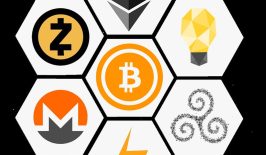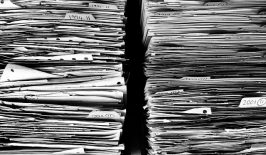A lot has happened in the last two years: while some have heralded blockchain and other DLTs as an important tool to make our society more open and democratic, others claim that the hype is unwarranted, and criticize, among other things, the technology’s (as yet still huge) power consumption.
Here, as so often, the truth is probably somewhere between the two.
A Boost for the Sharing Economy?
The development of the Ethereum blockchain and smart contracts are crucially important when it comes to the role of blockchain in the future of the sharing economy. Smart Contracts make it possible to define rules for, and automate, peer-to-peer transactions – making it possible, for example, for a financial transfer to take place only after a certain service has been rendered.
While Airbnb, Uber and Co make a lot of money for charging “middle-man” fees for these kind of sharing applications, blockchain and other DLTs offer the same function, namely an exchange transaction, but at lower cost and with full transparency. In this way, DLTs could give consumers greater autonomy and self-determination when it comes to peer-to-peer sharing. The example of the Brooklyn Microgrid is a great demonstration of this in action.
Building digital identity applications on the blockchain – a distributed ledger which doesn’t rely on a central entity to process, store or verify it – opens up new opportunities for people who do not possess the conventional identifications documents often required by conventional institutions like banks and governments.
There are several startups convinced that blockchain-based digital identity could help improve the lives of the undocumented around the world. Humaniq, Banqu and MONI are just a couple of examples of fintech organisations that are opening up access to financial services to the unbanked with the help of blockchain technology.
Aid:Tech and the WFP’s Building Blocks programme are both distributing digital identities to refugees and then using these to fairly, efficiently and flexibly allocate financial and social aid to individuals.
On the other hand, there are others that say that blockchain technology is simply too new for us to be experimented with it on such vulnerable groups, that it could become a new way for states and corporations to keep tabs on people’s digital lives, or simply that the blockchain is superfluous, and that existing technologies – such as centralised databases – are a perfectly workable solution, as well as being more scalable. Security and data privacy are obviously an issue here too, and individual applications will have to ensure they protect their users’ sensitive data – from theft, loss, misuse or access by unauthorised people.
Transparency for transactions and supply chains
Blockchains and DLTs could streamline bureaucratic and administrative processes and create trust where intermediary institutions used to be: by verifying identities, tracking objects or assets, and certifying transactions. For aid organisations, blockchain-based solutions can help them to track donations and aid from donor to recipient, and remove the chance of them going missing due to fraud or corruption.
The technology also has huge potential to prevent corruption in other areas, such as the registration of property or the allocation of land rights. And blockchain can also bring transparency into supply chains. We’ve seen this in action in solutions from Provenance, Bext360 and MineSpider, among others.
All of these applications, however, require regulation and, above all, for all participants to adhere to certain rules if the data being entered is really to be as reliable and traceable as needed. Blockchain-based solutions like these need there to be strong systems already in place that work with integrity and there is a genuinely will to create more transparency in what they do. Merely applying the new technology to an area where these structures aren’t in place, and where corruption is rife, would be doomed to failure.
What about blockchain’s ecological footprint?
One common criticism of blockchain technology is its huge appetite for electricity. The Digiconomist estimates that in 2017, just the Bitcoin blockchain alone used 32.4 terawatt hours, just under the annual electricity consumption of Denmark (at around 33 terawatt hours).
The incredibly high power consumption is due to the fact that computers connected to the Bitcoin network store an identical copy of the complete blockchain (size August 2018: > 177 GB) and validate all transactions at high speed by means of a Bitcoin-specific, complex mathematical puzzle (called “proof of work” or “consensus” algorithm). But there may be a solution: the Ethereum community is proposing a new mechanism for validation, the so-called “proof of stake” algorithm which uses a less energy-intensive process. Future developments may seen this sink even further.
What can we expect from blockchain in the future?
When the topic of blockchain and DLT first entered the mainstream, some people declared that the technology was going to revolutionise our economy and society, and make the world a better place to live. Now that the hype has died down a bit, it’s time to take a look at those examples where using blockchain really makes sense and to give those projects time to develop and demonstrate the extent of their impact.
It’s possible that DLTs will have a much greater impact on society than merely for their role in the development of cryptocurrencies. We see enormous potential in areas where efficient and secure documentation of processes is needed, where smart contracts can enable direct peer-to-peer transactions, and where decentralisation of information can create trust. But it can feel unnerving to be plunged so deep into the digital world: it’s not a central institution or your fellow human beings who you’re being asked to trust here, but rather a technology. And that, of course, also brings with it certain risks.
All in all, blockchains and other DLTs have great potential for democratising access to services, streamlining and securing the sharing economy, tightening up administrative procedures and empowering consumers. Whether the technology is sufficiently scalable and the benefits really will end up outweighing any possible negative impacts? Only time will tell. Just like any form of technology: blockchain and DLT is not, in itself, a solution to the ills of the world or of society, but rather a practical tool that can supplement and support solutions for real-world problems.
To read the rest of the interviews, case studies and background articles in RESET’s Blockchain Special, click here.
Co-authors for this piece: Marisa Pettit and Lydia Skrabania






